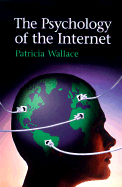Book contents
- Frontmatter
- Contents
- PREFACE TO THE PAPERBACK EDITION
- 1 THE INTERNET IN A PSYCHOLOGICAL CONTEXT
- 2 YOUR ONLINE PERSONA: THE PSYCHOLOGY OF IMPRESSION FORMATION
- 3 ONLINE MASKS AND MASQUERADES
- 4 GROUP DYNAMICS IN CYBERSPACE
- 5 INTERGROUP CONFLICT AND COOPERATION
- 6 FLAMING AND FIGHTING: THE PSYCHOLOGY OF AGGRESSION ON THE NET
- 7 LIKING AND LOVING ON THE NET: THE PSYCHOLOGY OF INTERPERSONAL ATTRACTION
- 8 PSYCHOLOGICAL ASPECTS OF INTERNET PORNOGRAPHY
- 9 THE INTERNET AS A TIME SINK
- 10 ALTRUISM ON THE NET: THE PSYCHOLOGY OF HELPING
- 11 GENDER ISSUES ON THE NET
- 12 NURTURING LIFE ON THE INTERNET
- Index
6 - FLAMING AND FIGHTING: THE PSYCHOLOGY OF AGGRESSION ON THE NET
Published online by Cambridge University Press: 05 August 2012
- Frontmatter
- Contents
- PREFACE TO THE PAPERBACK EDITION
- 1 THE INTERNET IN A PSYCHOLOGICAL CONTEXT
- 2 YOUR ONLINE PERSONA: THE PSYCHOLOGY OF IMPRESSION FORMATION
- 3 ONLINE MASKS AND MASQUERADES
- 4 GROUP DYNAMICS IN CYBERSPACE
- 5 INTERGROUP CONFLICT AND COOPERATION
- 6 FLAMING AND FIGHTING: THE PSYCHOLOGY OF AGGRESSION ON THE NET
- 7 LIKING AND LOVING ON THE NET: THE PSYCHOLOGY OF INTERPERSONAL ATTRACTION
- 8 PSYCHOLOGICAL ASPECTS OF INTERNET PORNOGRAPHY
- 9 THE INTERNET AS A TIME SINK
- 10 ALTRUISM ON THE NET: THE PSYCHOLOGY OF HELPING
- 11 GENDER ISSUES ON THE NET
- 12 NURTURING LIFE ON THE INTERNET
- Index
Summary
When John S. required knee surgery, his boss asked if he would stay on top of his job in the finance office via email. John readily agreed, thinking it would make points with the boss and relieve some of the boredom of two weeks in bed. The Information Systems Department loaned him a laptop and showed him how to get his mail using Pine, software he didn't know but that seemed easy enough to learn. All went well the first few days as he routinely opened his electronic inbox and replied to incoming mail. But Pine's opening screen had a second, cryptic option: “News-collection <news>.” He moved his cursor and pressed the return key. His laptop monitor filled up with an incomprehensible and seemingly endless list of titles, most with bizarre references to everything from aliens to erotica. Years before the Internet had become a household word, John accidentally stumbled into what some call the Dodge City of the online world: the Usenet newsgroups.
He began exploring and then participating in some of the sportsrelated discussions and was thrilled the first time someone replied to one of his posts. It wasn't long, however, before another participant, identified as “Tallyho,” called him a moron. He had a knee-jerk reaction and spent many hours composing what he thought was a brilliant comeback. Then he logged on several times a day to watch for the reaction.
- Type
- Chapter
- Information
- The Psychology of the Internet , pp. 110 - 132Publisher: Cambridge University PressPrint publication year: 1999
- 1
- Cited by



